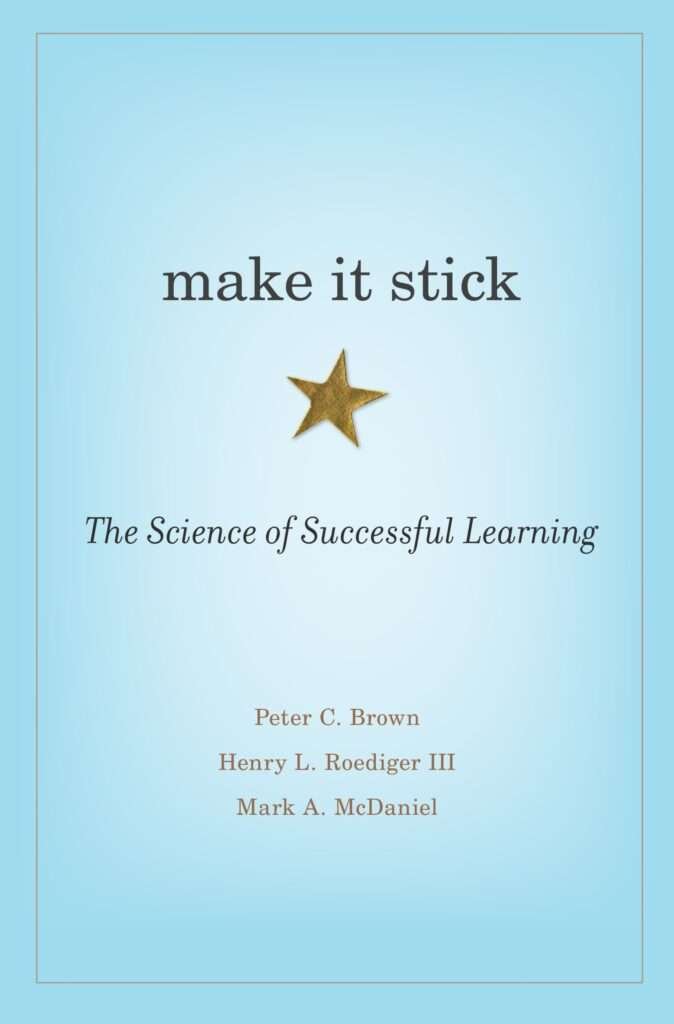Introduction
First and foremost, memory is at the base of successful learning. Remembering and Recalling:This helps students to remember the information they learned before, connect new material with what they already know,and reuse learning in different but similar situations. But, in the hectic scenario of academia and since students juggle with a barrage of information at once, memory is easily one big challenge. Building memory isn’t strictly about the what, but also the how — reinforcing our learning environment to enable us to understand complex systems and remember them for a longer period of time. Anyhow, there are methods and ways to improve your memory for this little problem group; a lot of books go deeply into these techniques that can help out you. In this post, I will talk about five books on memory which is very essential and these are the best learning book. – Improving Memory for Learning

Improving Memory for Learning
Here are five books aimed at improving memory for learning, covering useful strategies and scientific knowledge to arm students with tools that can help them improve the encoding in their brains (aka storing information more effectively), leading to enhanced retention of information when they need it:
1. “Moonwalking with Einstein: The Art and Science of Remembering Everything” by Joshua Foer
- Overview: Part memoir, part experiment and a whole lot of science, Moonwalking with Einstein dives deep into the world of memory. Joshua Foer chronicles his transformation from a wannabe to world class memorizer while delving into the colorful history of memory. This is not just a book about competitions and memory championships — it explains how those ancient techniques can be two of the most powerful learning tools you could ever hope to discover for your life or academic work.
- Key Insights:
- Establishment: One of the memory strategies that Foer ponders is simply a word used to think about an antiquated system utilized for centuries known as The Memory Palace. This is where you think of a familiar place, so somewhere like your home and then link bits of information from what ever it is that needs to be learned – with individual places within the house. The relationship the room or object has with your visuals & spatial activity aids in pushing things into memory for later retrieval.
- Freedom from the Senses: Foer details on how important chunking (organizing concepts into groups of information) and visualization are for memory improvement. These tricks assist in turning the concepts into real-life by creating a bond, which forces your brain to remember things well.
- Practice: Foer keeps reminding the reader that it is wonderfully powerful, but there are techniques for memory and necessary em practice. Building memory—much like building muscle strength, improves with work.
- Practical Application: The memory palace technique as described in the book can help students to remember and recall information when preparing for exams, presentations or other academic endeavours. One example is where, during study sessions for different subjects studied by a student— results can create Memory Palace locations in the “Room” sections of Locations becoming capable remembering earlier memorized facts/ formulas I dates such This will help them remember notes using more contexts.

2. “Make It Stick: The Science of Successful Learning” by Peter C. Brown, Henry L. Roediger III, and Mark A. McDaniel
- Overview: This is a book that has been literally decades in the making, bringing together an incredible amount of research on cognitive psychology and turning it into actionable advice for learners. Cognitive scientists, the authors challenge established thinking about how memory works and seek to provide evidence-based strategies for improving recall. The book is about how learning and memory intertwine with each other, what you can do to take advantage of that union in order to learn better and retain memories longer.
- Key Insights:
- Active Retrieval: A central concept in “Make It Stick” is the power of active retrieval. The authors say that ‘the act of trying to retrieve information — not passively reviewing it, but testing yourself instead’ produces a major improvement in long-term learning and comprehension. This can also be done by testing yourself (self-quizzing) or using flashcards.
- For example: Spacing And Interleaving — In the book, the author dives deep into something called as spacing effect which suggests that if you space out your study sessions over time (opposed to cramming), it leads to better long-term retention. Interleaving—mixing different ideas or areas throughout an ideal time of day to study—is another practice noted for learning, as it compels the mind work harder in order not just sustain but apply information.
- Elaborative Interrogation and Reflection: The authors de ne elaborative interrogation as the process of asking students to explain why a fact is true, or connect it with something they already know. Reflecting on learning consolidates the knowledge and its application to other things which aid in retention.
- Practical Application: The advice in ‘Make It Stick’ could be used to teach students how to study better and remember things for a longer period. E.g., not just read through notes text-based, they can generate their own quizzes, space out the learning over weeks and interleave subjects to improve efficiency of learning.

3. “Your Memory: How It Works and How to Improve It” by Kenneth L. Higbee
- Overview: Your Memory by Kenneth Higbee is Gargantuan Expose of What They Can Teach You (to Help Their Treasure Trove) The science of memory is fully investigated — from encoding, to storing and then successfully retrieving information. It also provides a wide variety of concrete strategies for enhancing memory, making it very useful to students who want to improve their learning recall.
- Key Insights:
- Various Mnemonic Devices: Higbee has very detailed descriptions in regards to several mnemonic devices — a memory aid that helps us remember or memorize some things by relating the new information to something we already have stored. This can be done through acronyms, acrostics or rhymes epecially useful for remembering lists of items; dates and complex sequences.
- The book also introduces students to visualization techniques, where they may create mental images which represent information. If you show students abstract concepts in the form of concrete images, information becomes more memorable and recalled for a longer time.
- Repetition and Review: Higbee stresses how regular review of information (across time) will solidify memory so as to prevent it from decaying. Spacing out reviews (spacing effect): He talks about how one of the most effective research-backed methods to increase memory retention is through spacing out review.
- Practical Application: Students can make their study time more efficient by using the memory aids and visual imagery described in “Your Memory” to enhance how well they remember information. A biology student could learn a series of ideas in their class and then create an illustrated plot point or memory trick which they can reference on exam day.

4. “The Memory Book: The Classic Guide to Improving Your Memory at Work, at School, and at Play” by Harry Lorayne and Jerry Lucas
- Overview: The Classic Guide to Improving Your Memory at Work, at School and At Play by harry lorayne & jerry lucas If you want practical advice on improving memory in nearly every area of your life — from academic learning to remembering phone numbers— this is the book for you. It also provides step-by-step procedures to utilize these methods when remembering words and even long texts.
- Key Insights:
- For Lists and Sequences- Lorayne & Lucas with their “link” and “peg” systems for that. The link system consists of creating a series of connections between items, while the peg systsem relies on number lists — or pegs- to which information can be glued.
- 6Memory Training ExercisesThese are training exercises in the book that you can take to strengthen your memory, see how disciplined yours mind needs to be able store and retrieve some information from it.
- How To Use It: Given as Memory Power Applications, the authors provide examples such activities for memorizing names and dates in 3-digits, vocabulary and any kind of information one could come across academically. These are something practical and you can implement it to the daily learning tasks from next day itself.
- Practical Application: Students can use the methods in “The Memory Book”to help them remember information for exams, presentations and other academic tasks. A student learning history, for instance could secure success during a test by arranging the system regarding key dates in sequential events.

5. “Unlimited Memory: How to Use Advanced Learning Strategies to Learn Faster, Remember More and Be More Productive” by Kevin Horsley
- Overview: This book is a smart technique by Advanced learning strategies to go above and beyond normal methods of memorizing things, Unlimited Memory By Kevin Horsley It points to act that memory is but a skill which may be acquired by the proper set of strategies and repeated practicing. Drawing upon similar techniques employed by memory champions, Horsley has just applied these methods to more generalized learning and the result is fast a or normal human level of retention over huge chunks information for his students.
- Key Insights:
- Focus and Attention — Horsley says that, the then basic human components for memory storage. The quality of attention paid to learning literally determines how well it is remembered the book elaborates Tips such as reducing distractions and performing mindfulness practices while studying can help you do so.
- Association Techniques: This essentially means associating new things with the information you already know or have come across which makes it easy for your brain to remember. Which means you should mentally draw an image or a story that binds new fact in context to information already existing.
- Visualisation and Storytelling: Horsley explains that concept of using a visual aspect to store key information in your brain so when you think back on the subject, it is far more enjoyable. They work well when attempting to memorize things like paradoxes, contradictions or other handwritten concepts;
- Practical Application: Students can use the mastery-level memory tips from “Unlimited Memory” to increase how well they learn, which in turn encourages better information retention and recall. For example, students might imagine difficult mechanisms in chemistry or physics as narrative form presented as vibrant images which help them to understand and remember.

Why We Need This?
If you are curious, try to remember that memory is basic need for learning. Inability to rememberOn the other hand, students may have trouble learning or remembering information, memory is a bit different from recall/activation in that if something was never stored properly (eg. going in one ear and out of the next), even with strong activation/recall they might not be able to pull those memories up when needed for use as knowledge. The task of learning is getting harder as the volume of information students must try to absorb grows. Which can result in better grades, more confidence when taking tests and gives you a complete grasp over the subject. These are the books about tools and techniques to improve memory and speed of learning.
How It Can Benefit Us? | Improving Memory for Learning
Benefits of Memory for Learning
- Improved retention: Memory is better, and so students retain the information they learn requiring less practice related study time making it more effective. The result: by learning more faster, students understand their subjects better and can go deeper.
- Increased registration — better memory techniques assist students in studying with no inaccuracies. Remembering minutiae or larger concepts… their value is undeniable when it comes to the classroom.
- More Confident Participation: When students are feeling more assured that they will be able to recall and apply the material, their engagement in class increases and are more open toward taking on tasks with increased difficulty. That confidence can lead to more opportunities for talking about the material because students are less afraid of getting an embarrassing response, and therefore more encouraged going into developing a positive attitude towards learning.
- Cognition: Techniques that require students to actively retrieve, visualize and link information also deepen their understanding of content by enabling them to make connections between new material and prior knowledge. This better understanding not only benefits your memory but allows you to apply the knowledge in different contexts.
- Time-saver: With the best memory techniques, students can learn quickly even a bigger stuff than usual and it open doors for other activities rather making them tense. And this efficiency can help save time for students who have a lot on their plate, or are simply involved in extra curriculars concurrently with academics.

How Books Can Help in This Case? | Improving Memory for Learning
Students Need Authors Who Speak this LawStudent Skills Prepare Them to Study for Gradesessays on memory: How a Memory Improvement Book Can Make You Better… by MC Sedarapproaches of learning here
- Methodology: In this category, we have books containing surefire memory hacks and tips based on research that has been carried out together with how they concretely worked in different learning scenarios This ensures students that the strategies they are learning have been proven to be reliable and effective.
- Squeeze In Practical Exercises: Many of the books come with practical exercises and activities that students can practice to train their brain muscle for memory, and how they could fit [in] studies. It goes a long way to make such exercises part of everyday study routines as they seem so simple yet, the effects tend to be massive.
- Learn behind the techniques: The books use these memory strategies to go over just how our minds store information and also what we can perform to learn at a deeper level than simply rote memorization so you’re able comprehend extensively. I have often found that when recorders know a lot, they are able to weave many techniques together in ways that suit them personally as learners.
- Applicability: The memory techniques described in these books are general skills for learning and can be used by students following any type of syllabus. Regardless of whether you are learning languages, sciences or humanities, these methodologies can help students maximize their memory and improve the effectiveness of education.
- Memory Skills: The memory hack techniques taught by books of this kind can also help boost your memory, thereby giving you the ability to develop strong skills in terms of how good or bad is the book at recall. They are skills you can continue to develop as a member of the workforce and quality attributes for learning throughout life and personal growth.
Conclusion | Improving Memory for Learning
Memory is a cornerstone of great learning, and haveing the right type guidance to improve your memory retention and recall can be highly beneficial. Below are five books that contain many strategies, techniques and insights on how to get better at such learning by improving student memory. Students require memorization skills to go beyond academia, and by integrating the theories of these books into their study routines they can remember more information better and apply it effectively for not only written exams but also in practical life — making them perform well academically while having an overall enriching experience.
FAQs | Improving Memory for Learning
- What are the best techniques for improving memory for learning?
Some of the best techniques for improving memory include active retrieval, the memory palace, visualization, association techniques, and spaced repetition. These techniques help strengthen memory connections and improve recall. - How can I use the memory palace technique for studying?
The memory palace technique involves visualizing a familiar place and associating pieces of information with specific locations within that place. This method helps organize and recall information more effectively by creating vivid mental images. - What role does visualization play in memory improvement?
Visualization involves creating mental images of the information you want to remember. This technique helps in encoding the information more effectively and makes it easier to recall by associating it with strong, memorable images. - Can these memory improvement books help with exam preparation?
Yes, the techniques and strategies discussed in these books are highly effective for exam preparation. They help students retain and recall information more efficiently, leading to better performance during exams. - How often should I practice memory techniques to see improvement?
Regular practice is key to seeing improvement. Incorporating memory techniques into your daily study routine and practicing them consistently will help strengthen your memory and enhance learning over time.
Check Out The Sources
Check Out More


